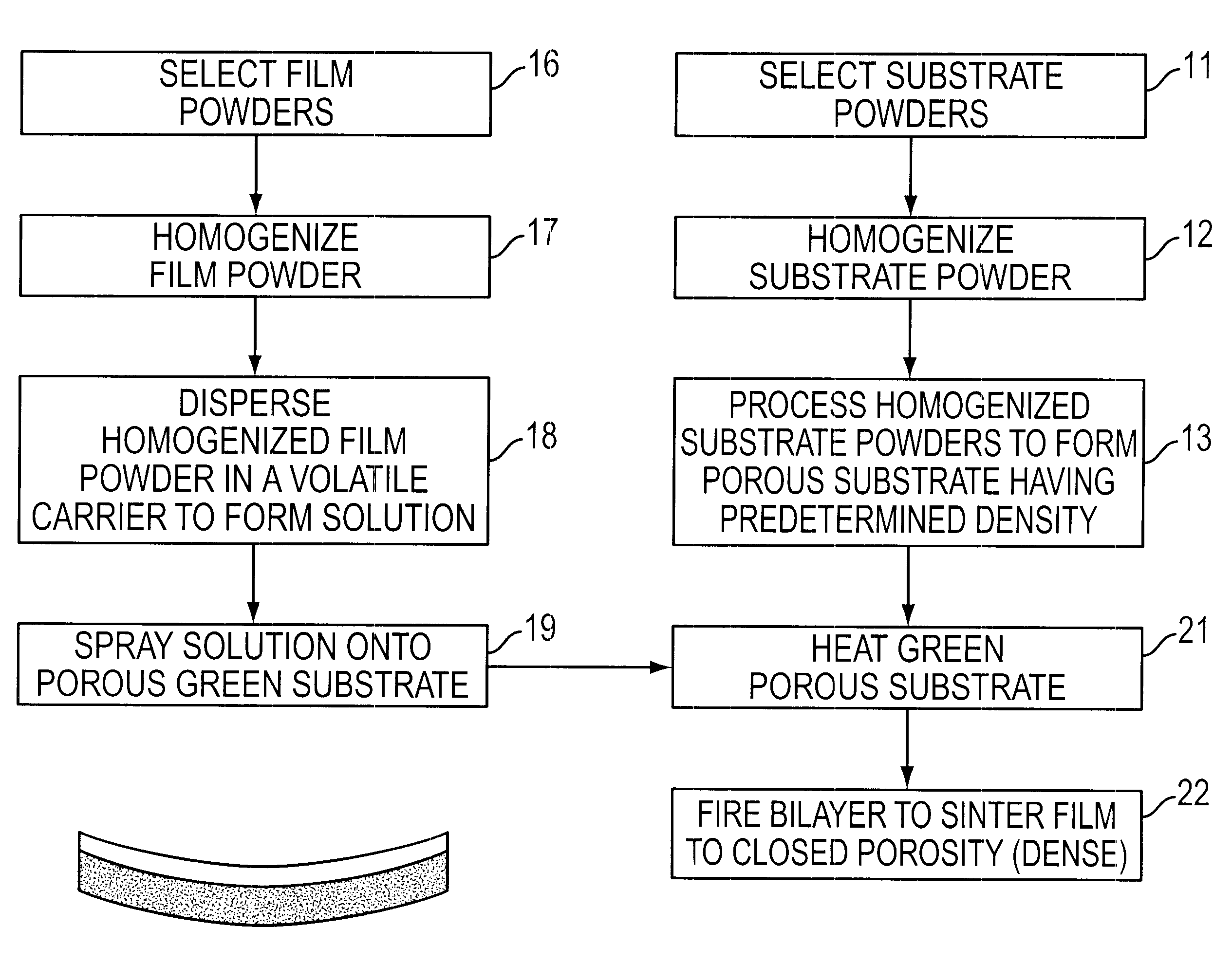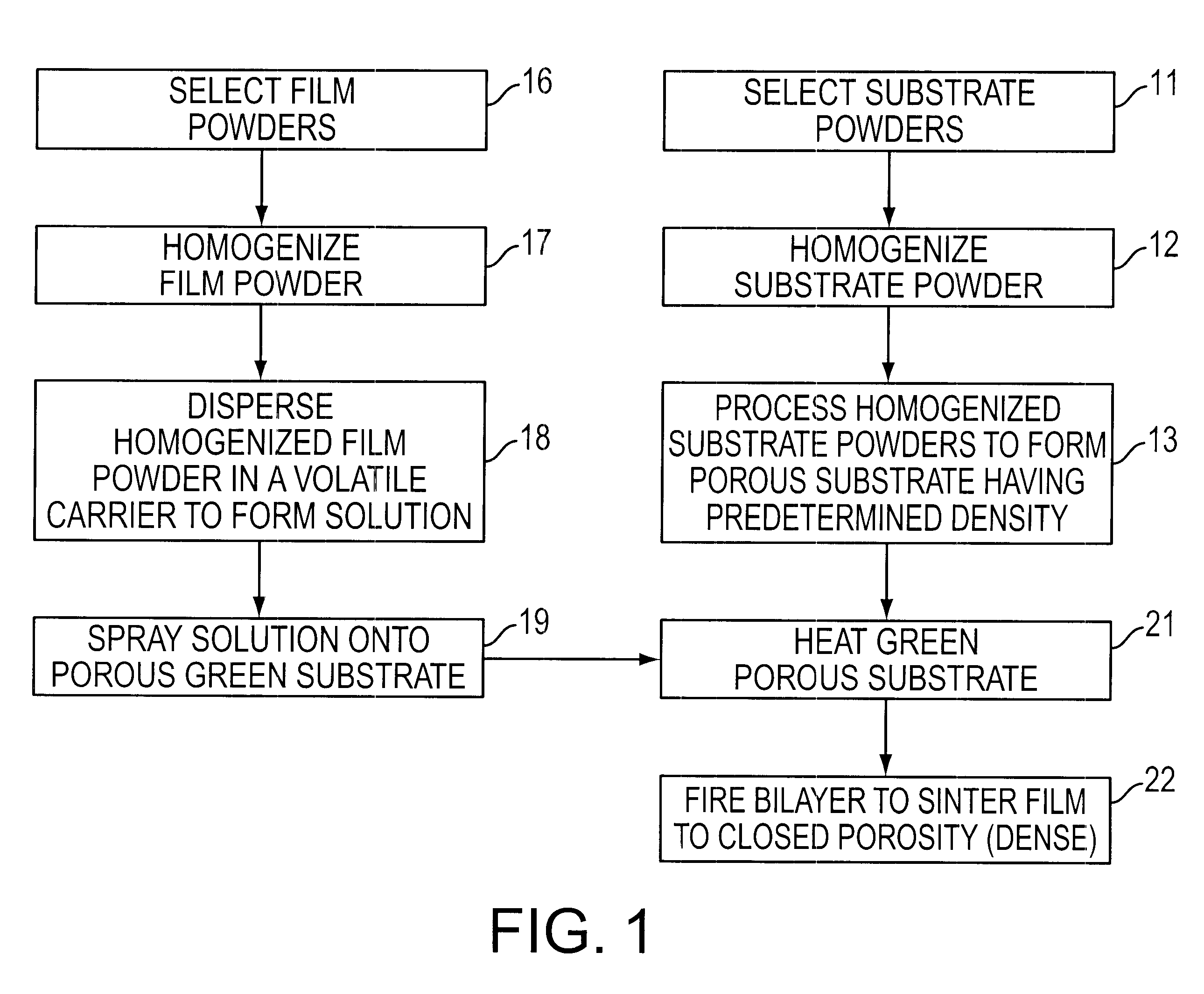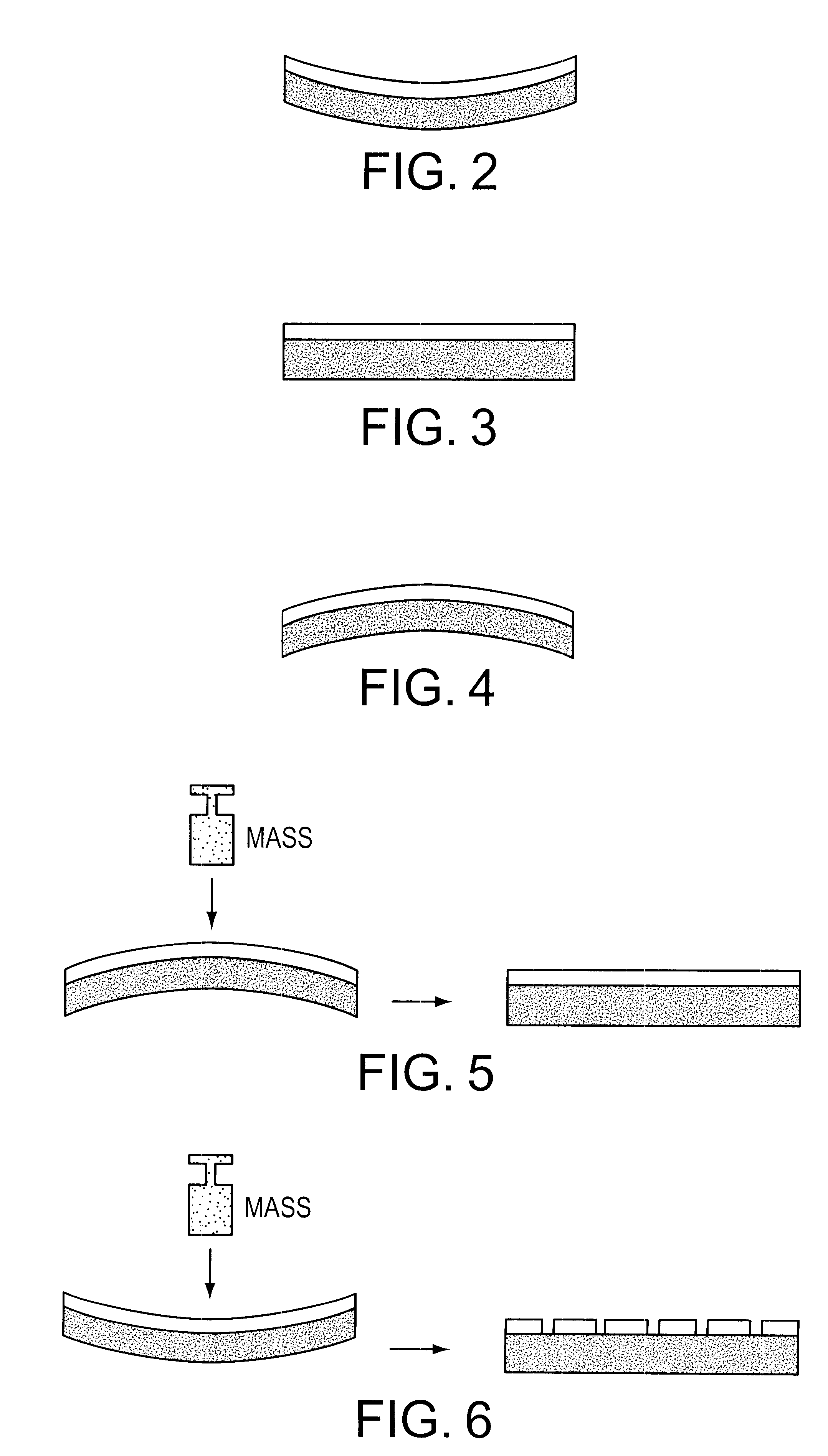Method for making thin, flat, dense membranes on porous substrates
a porous substrate and colloidal deposition technology, applied in the direction of non-aqueous electrolyte cells, cell components, electrochemical generators, etc., can solve the problems of high cost of capital equipment and/or operating costs for several of these approaches, a considerable barrier to their commercialization, and inhomogeneity of film and substrate, so as to achieve high quality
- Summary
- Abstract
- Description
- Claims
- Application Information
AI Technical Summary
Benefits of technology
Problems solved by technology
Method used
Image
Examples
example 1
Ionic (Oxygen) Conductor on Cermet Precursor--YSZ Thin Film on Porous NiO / YSZ Substrate
Yttria stabilized zirconia (YSZ), NiO and a binder / pore former (corn starch) were obtained from commercial vendors (Tosoh Corporation, J.T. Baker Inc., and CPC International Inc. respectively). The substrate powders consisting of 54 wt % NiO, 36 wt % YSZ and 10 wt % corn starch were attritor milled with zirconia milling balls at 550 rpm for 3 hours in acetone. The powder was dried and sieved to <100 .mu.m using a stainless steel wire sieve. 2.5 g of powder were uniaxially pressed in a 3.81 cm (1.5 in) steel die at 10,000 lbs. The substrate was fired in an air furnace using the following schedule: 1.degree. C. / min to 400.degree. C., hold for 1 hour, 5.degree. C. / min to 900.degree. C., hold for 8 hours, 5.degree. C. / min to room temperature. The green substrate now had sufficient strength for thin film deposition. The substrate was placed on a hot plate and held at .about.100-150.degree. C. while .ab...
example 2
Concave / convex YSZ on NiO / YSZ Substrates
A bilayer was prepared in an identical manner as Example 1 with the exception that no alumina weight was placed on the structure during sintering. The bilayer sintered without the alumina weight results in a convex disk (thin film side up). The film was pinhole free.
Bilayers were prepared as in Example 1 with the following change: the substrate powders were pressed at 15,000 lbs. instead of 10,000 lbs. This resulted in a substrate having a higher green density and which resulted in smaller shrinkage during sintering. Bilayers were sintered with and without a 45 g alumina weight. The sample sintered without the alumina weight was concave (thin film side up). The film was pinhole free. The sample sintered with the alumina weight was flat, but the film had pinholes and was not gas tight.
example 3
Airbrush Technique vs. Pipette Technique
Substrates were prepared as in Example 1. The electrolyte layer of one sample was applied by dripping YSZ solution onto the porous electrode substrate via a pipette. This sample was sintered at 1400.degree. C. with an alumina plate weighing in excess of 10 g / cm.sup.2 on top. The resulting bilayer was not flat and possessed significant edge curl and surface irregularities, FIG. 8A. Additional creep flattening of the bilayer was attempted using >100 g / cm.sup.2. The bilayers remained uneven. The electrolyte layer on a second sample was applied using an airbrush as in Example 1. This sample was sintered at 1400.degree. C. with an alumina plate weighing <5 g / cm.sup.2 on top. The resulting bilayer was very flat and very homogeneous, FIG. 8B.
PUM
| Property | Measurement | Unit |
|---|---|---|
| total shrinkage | aaaaa | aaaaa |
| total shrinkage | aaaaa | aaaaa |
| temperatures | aaaaa | aaaaa |
Abstract
Description
Claims
Application Information
 Login to View More
Login to View More - R&D
- Intellectual Property
- Life Sciences
- Materials
- Tech Scout
- Unparalleled Data Quality
- Higher Quality Content
- 60% Fewer Hallucinations
Browse by: Latest US Patents, China's latest patents, Technical Efficacy Thesaurus, Application Domain, Technology Topic, Popular Technical Reports.
© 2025 PatSnap. All rights reserved.Legal|Privacy policy|Modern Slavery Act Transparency Statement|Sitemap|About US| Contact US: help@patsnap.com



